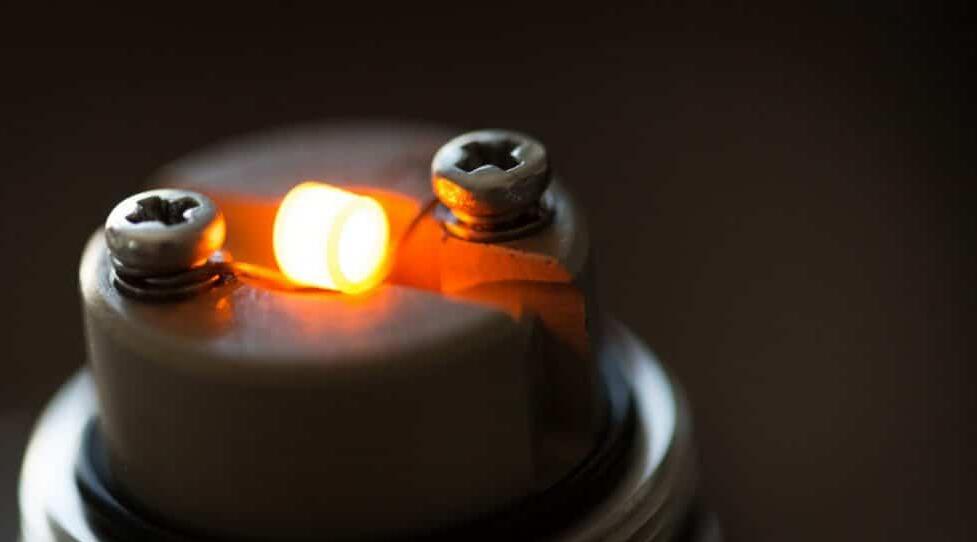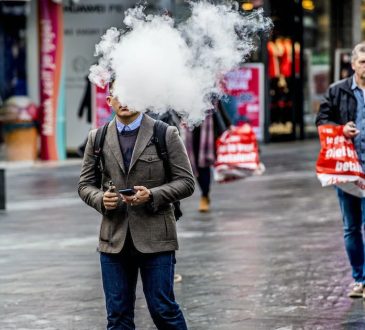
The process known as dry burning involves applying high power to a coil without any e-liquid in order to clean or adjust it. While some vapers use this technique, experts warn that it can have negative effects on the coil’s material and potentially result in the production of unwanted particles that could be inhaled.
Dr. Konstantinos Farsalinos and material sciences expert Pedro Carvalho investigated the issue and came to the conclusion that dry burning should not be performed on any type of coil. Their research highlighted the potential risks associated with this practice, emphasizing the importance of using coils as intended and avoiding actions that could compromise their safety and performance.
What is a coil made of?
Heating elements in vaping devices are typically composed of various types of resistance wires. These wires differ in their chemical composition and quality, depending on the brand.
Kanthal, one commonly used wire, is an alloy of iron, chromium, and aluminum. When heated, aluminum oxide forms a protective layer on the wire’s surface. However, Kanthal does not allow for temperature control with advanced mods.
Nichrome is another popular alloy, consisting of chromium and nickel. When heated to high temperatures, a layer of chromium(III) oxide forms on the surface, protecting the heating element from further oxidation.
Ni200 is a pure nickel wire. When heated above 400°C, nickel oxide can form, with two types of oxides possible: green Ni oxide, which is inert, and black Ni oxide, which is reactive.
Stainless steel (SS) has also been introduced to the vaping market. It is an alloy of iron, carbon, and at least 13% chromium, which prevents the formation of a protective oxide layer. Trace amounts of other metals, such as molybdenum and manganese, may also be present in certain types of stainless steel, like SS316.
Each type of wire has its own characteristics and considerations, and vapers should be aware of the properties and potential limitations of the specific heating element they are using.
Why is a dry-burn dangerous?
Dry-burning poses three potential dangers:
- Formation of Oxidized Coating: Dry-burning creates an oxidized material coating on the surface of the coil. During vaping, this coating can peel off and be inhaled as microscopic particles or particulate matter, along with the aerosol. This can potentially lead to respiratory exposure to these particles.
- Allergic Reactions: Particulate matter, such as nickel, can trigger allergic reactions, including skin rashes, itching, and redness. However, the relevance of this type of toxicity in e-cigarettes is likely lower compared to combustible tobacco products. Moreover, certain compounds, like nickel combined with carbon monoxide, can have carcinogenic properties, but the minimal dosage in e-cigarettes makes this type of toxicity less likely.
- Toxicity: Particulate matter can also exhibit toxicity in organisms. Welders exposed to manganese oxides, for example, have experienced cases of toxicity. However, the extent to which this toxicity applies to e-cigarettes is not well established.
It’s important to note that while dry-burning may accelerate corrosion and affect the quality of the heating element, the likelihood of toxic or carcinogenic effects is minimal due to the low dosage involved in e-cigarette use.
Unintentional dry burning
An unintentional dry burn can occur when the e-liquid in the tank is insufficient, causing the cotton to become dry. In such cases, it is recommended to discard the burnt coil and replace it with a new one.
Likewise, reusing old coils is not recommended as they may already have undergone some level of corrosion, making the metal surface more fragile. It is best to use fresh coils for optimal performance and safety.
Putting things in perspective
However, it is important to note that a dry burn does not necessarily make vaping worse than smoking. However, it does increase the risk of releasing potentially harmful compounds that may be inhaled by the user. To ensure coil consistency and clean it from manufacturing residuals, a moderate heating of the wire may be more appropriate.
Furthermore, using a coiler can assist in building coils in a consistent manner. Ceramic heating elements have also emerged in the market, although their safety levels are still being tested and results are pending. In theory, ceramic material appears to be a safer option compared to alloys or metals, but it should be noted that there are two types of ceramic coils with varying safety levels.
Considering the emphasis on safety in selecting high-quality e-liquids and advanced mods with temperature control, it is advisable to heed the advice of experts and avoid burning coils while ensuring they are kept clean.




